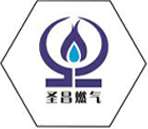
Sep . 02, 2024 04:44
Back to list
صمام تخفيض ضغط الغاز
Gas Pressure Relief Valve An Essential Safety Device
A gas pressure relief valve, commonly referred to as a gas pressure regulator or a pressure relief valve (PRV), is an essential component in various industrial and residential applications involving gas distribution and management. This device plays a critical role in ensuring safety and efficiency in systems that utilize gases, such as natural gas, propane, or compressed air.
Functionality and Importance
The primary function of a gas pressure relief valve is to regulate and maintain the pressure within a gas system at a predetermined level. When the pressure exceeds a certain threshold, the valve automatically opens to release excess gas, preventing potential hazards such as explosions, leaks, or equipment damage. In residential settings, these valves are vital in maintaining safe operational pressures for appliances like gas stoves, water heaters, and furnaces.
The importance of gas pressure relief valves cannot be overstated. In industrial applications, they are crucial in processes that involve the handling of flammable gases. By controlling pressure, these valves help ensure the safe operation of equipment, protect personnel, and comply with regulatory standards. In the event of overpressure, a properly functioning valve can mitigate risks, safeguarding both people and property.
.
There are various types of gas pressure relief valves, each designed for specific applications and requirements. The most common types include
صمام تخفيض ضغط الغاز

1. Spring-Loaded Valves These valves use a spring to hold the seat closed against the pressure of the gas. Once the pressure exceeds the set point, the valve opens to release gas, and it closes again once the pressure falls back to a safe level.
2. Pilot-Operated Valves These are more complex and utilize a small pilot valve to control a larger main valve. They can provide more precise control and are often used in high-capacity systems.
3. Electronic Pressure Relief Valves These modern valves use electronic sensors and actuators to maintain pressure. They provide real-time data and can be integrated into automated systems for enhanced monitoring and control.
Maintenance and Compliance
Regular maintenance and inspection of gas pressure relief valves are crucial for ensuring optimal performance and safety. It is recommended to follow the manufacturer's guidelines for maintenance intervals and procedures. Additionally, compliance with local regulations and industry standards is essential to mitigate legal liabilities and enhance safety measures.
In conclusion, gas pressure relief valves are vital components in managing gas systems safely and efficiently. By regulating pressure and preventing overpressure situations, they protect lives and property. As industries continue to evolve and expand, the importance of these safety devices will only grow, reinforcing the need for continued innovation and adherence to safety standards.
Latest news
-
Safety Valve Spring-Loaded Design Overpressure ProtectionNewsJul.25,2025
-
Precision Voltage Regulator AC5 Accuracy Grade PerformanceNewsJul.25,2025
-
Natural Gas Pressure Regulating Skid Industrial Pipeline ApplicationsNewsJul.25,2025
-
Natural Gas Filter Stainless Steel Mesh Element DesignNewsJul.25,2025
-
Gas Pressure Regulator Valve Direct-Acting Spring-Loaded DesignNewsJul.25,2025
-
Decompression Equipment Multi-Stage Heat Exchange System DesignNewsJul.25,2025

